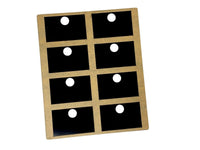Black Friday 2025 has landed at Analogue Wonderland, bringing some of our biggest film photography deals of the year - from discounted film and cameras to money-saving WonderLab processing offers, exclusive bundles, and festive specials available for a limited time only. Grab a great deal while stocks last!
Recent posts
Shop the article

The Magic of Now: Capturing Instant Memories at Your Wedding
I’m mainly a digital photographer - but I’ve been experimenting with film for the past couple of years (it’s been a new form of education for me). I’ve experimented with 35mm, Medium format, experimented with cameras that have frustrated and bought me much joy (and taught me a lot about photography into the bargain). But using film in a professional context (at a wedding for example) is quite difficult - with a myriad of issues that need to be dealt with to make sure photos are kept secure and nothing is lost along the way.
What I have developed a real love for, and have been using on professional shoots recently, are polaroids and instant film cameras. They bring a lot to my work, and also to the couple's experience on a wedding day. So in this article I’m going to walk you through what I've learned about shooting instant film at weddings!
Why instant film and not the usual 35mm?
I’m a documentary wedding photographer with a bit of an experimental and artistic bent. So for the last few years (and also around 2013/2015 - I keep falling down the analogue hole) I’ve been experimenting with shooting film on both 35mm and medium format film cameras at weddings.
I’ve always struggled to make using a film camera work for me at weddings though. When shooting with film cameras I find I often need to slow down and control the moment, yet what I love about weddings is their unpredictability and capturing those chaotic moments.
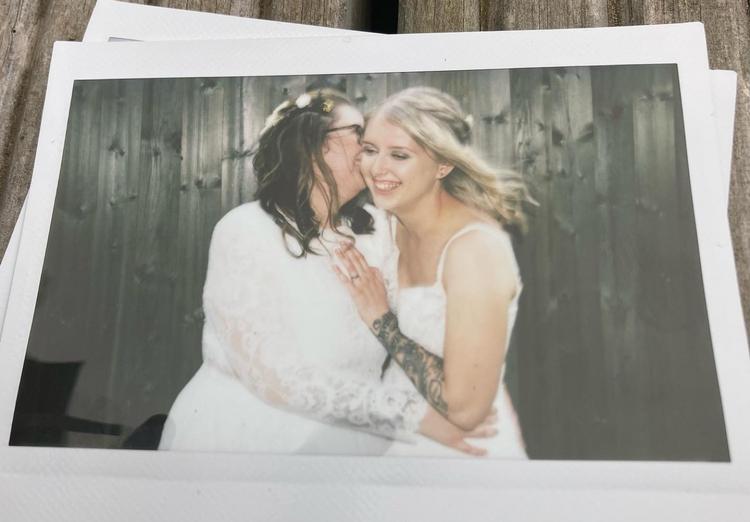
I think they’re a big part of my style so I struggle to know when to pull out a film camera (or more importantly, when to put it away). I have found something that works well for me and lets me experiment though - for me the magic bullet has been experimenting with polaroid and other instant cameras. For an alternative view check out Lisa's view: 35mm Film at Weddings!
The other benefit is that you get the result straight away - there's no need to use a developing lab like Analogue Wonderland.
Do you use instant film at every wedding?
I try to shoot instant film cameras when it feels like a good fit for the day. If I think a couple won’t be into it, I usually won’t mention it, or if they tap their watches and say “you’ve got us for ten minutes” the more experimental stuff stays in the camera bag and I play it straight to make sure I get the essential shots. No double exposures for them!
Previously it’s been a bit of surprise and fun for couples - I haven’t let them know about it beforehand and it’s a unique aspect to the day. I’ll often hand them a camera and get them to take photos of each other, or if they have younger children with them I’ll hand them the camera and get them to take some photos from their perspective.
But now I’ve started talking about it more openly I actually get couples approaching me who want some polaroid magic in their day
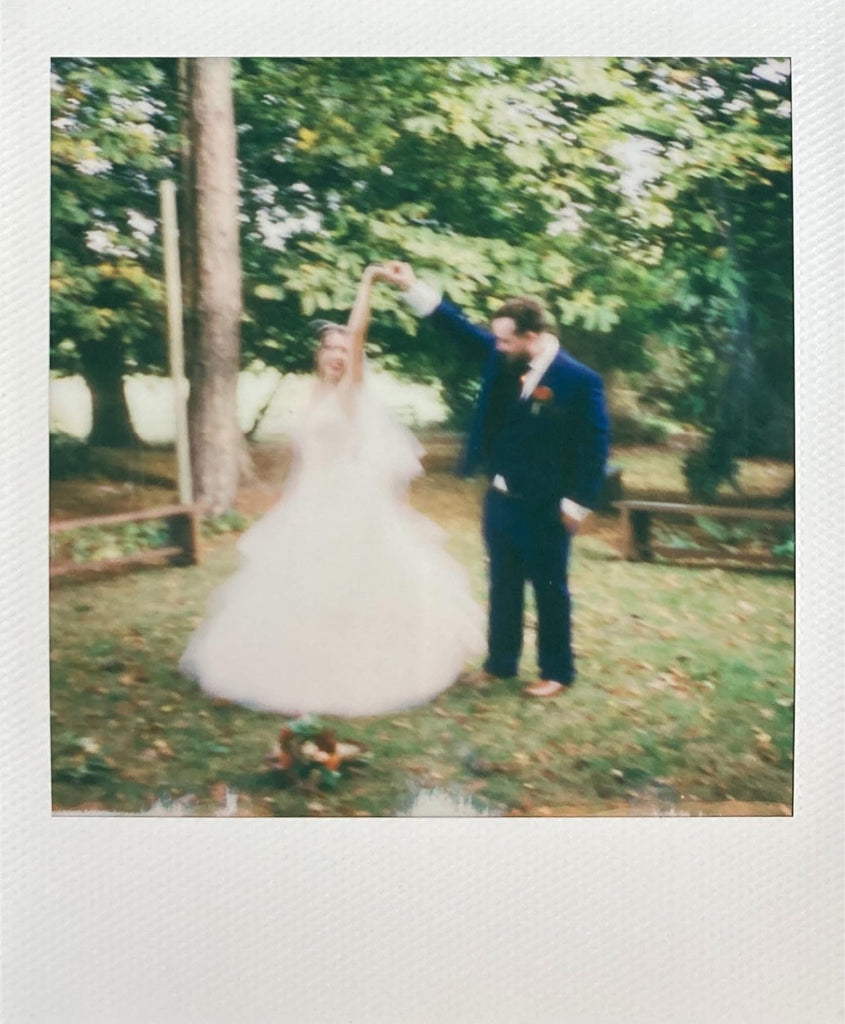
What is the appeal of instant film?
I love the imperfections and the nostalgic feel that you get from a good instant photograph. The dreaminess and blurriness. The probably-out-of-focus-and-incorrectly-exposed nature. It all adds to the feel that you’ve captured a moment that’s never ever going to happen again. And I know that’s true of all photography, but nothing hammers it home like an instant photo. It adds to the authenticity and immediacy of the photograph. See 'why people shoot film' for more detail!
Also: maching-gunning your way through instant film would be more expensive than shooting 35mm film on Leica 😂
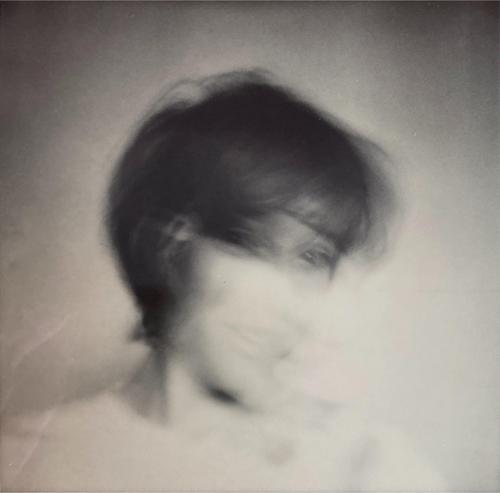
There’s also the instant gratification factor that your print is there straight away. No waiting for wedding photos to be taken away and edited into a slideshow, or waiting for the finished gallery. It’s something you can give a couple to take on honeymoon with them and relive the day whilst they wait for the rest of their photos. You can even get little instax and polaroid photo albums, folios and fridge magnets to make a special gift of the prints.
Instant film also encourages you to experiment and work within its own limitations for instance, my polaroid SX70 is very slow, but produces beautiful motion blur in the subject (sometimes blurry everything on a cloudy day). Polaroids can also produce light leaks or streaks that add to the artistic effect of the image and have a range of photographic papers that can produce different looks.
Lastly, a polaroid is a one off piece of art - you can’t replicate it or remake it (Scanning tends to look a bit rubbish unless you use a specialist scanning mask). So they are unique and totally irreplaceable.
For more information or tips on shooting instant film check out AW's 5 Top Tips for shooting Instax!
They also do instax printers, don’t they?
Yes, and you could think of instant cameras as a digital camera with a printer in them. Just trust me when I say, they take all the fun out of the process. Why would you take an experience that wallows in the imperfections and try to fix them? It’s a fool's errand.
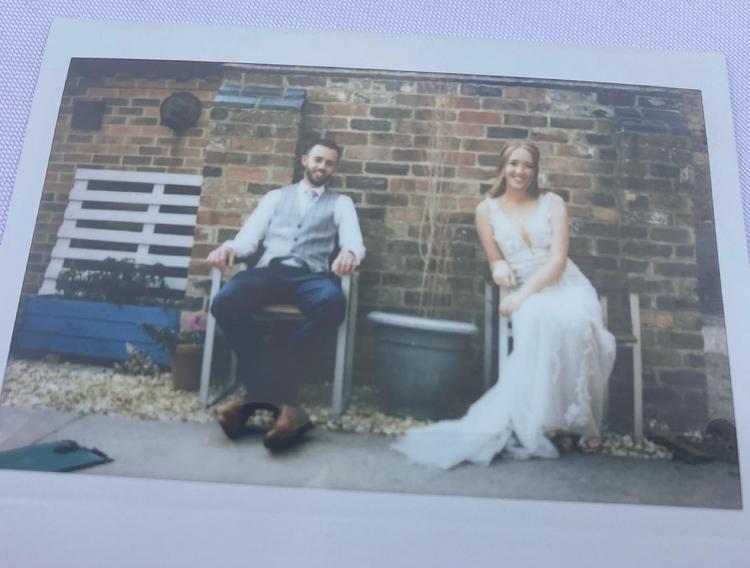
In my view every reason to love instant film is negated by the existence of such things (see also, camera apps that give a vintage vibe). Part of the joy is the mistakes and misfires and that ‘this is what I made’. And I know that not everyone shares that view, but that's the joy of creative industries!
What instant film cameras do you use?
I will use all sorts - anything I can lay my hands on, but these are a couple of my favourites that I don’t think I’d be without:
Fujifilm Instax Wide 100/200/300
I love the instax wide film format. The dimensions of an Instax Wide print are approximately 3.4 x 4.3 inches (86 x 108 mm), making them ideal for capturing group shots, landscapes, or subjects that benefit from a larger format. I find the standard instax a little small and love the bigger prints for everything though - from family shots through wedding portraits. The film is fast enough to use outside on a cloudy day, but is probably a bit slow for using indoors. Personally I find direct flash a little ugly (I will use it if needed though.) - so I do tend to use my Instax outdoors wherever possible.
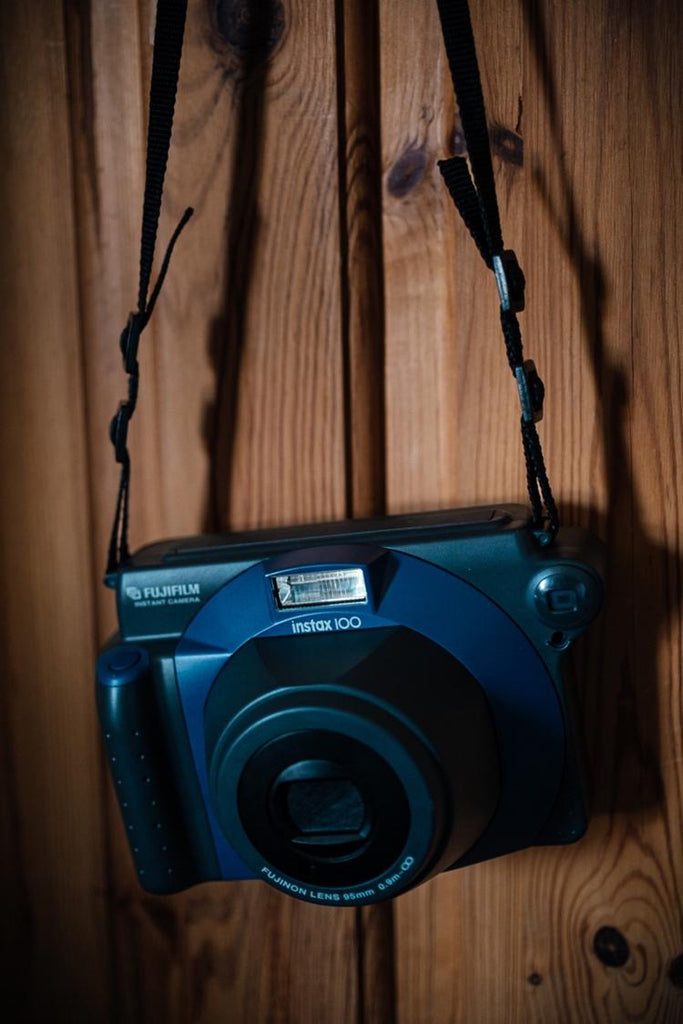
I also lust after the SQ6 - because I love the square format and think it’s a nice compromise between fuji colours and the polaroid square format (which I think is the perfect instant format - I love a good square photo)
I should also mention the colours - Fuji colours are far more realistic and the images tend to be sharper. I still don’t know if I prefer those qualities in an instant print - Polaroids have a weird scuzziness to colour science that’s quite inspiring and gives that unique Polaroid look that comes from the original Polaroid 600 film. On the other hand Fuji instax film is also usually far more economic than polaroid - so if you’re strapped for cash Fuji is often the cheapest to regularly shoot.
Polaroid SX70
The Polaroid SX-70 is a legendary instant camera that was introduced by the Polaroid Corporation in 1972. I don’t think they were trying to make a mass market camera, and you can really tell.
It’s is a weird and wonderful toy. It’s a folding camera with a glass lens, which you focus yourself (later versions came with sonar autofocus). It has a large film size and at F8, the out of focus areas are still blurry. It shoots ISO100 film at F/8 - so it works well on a sunny day, but if it’s overcast / indoors the results get a bit experimental (which I totally love and is the reason I keep such a temperamental and vintage camera in the kit). Learn more about the exposure triangle here!
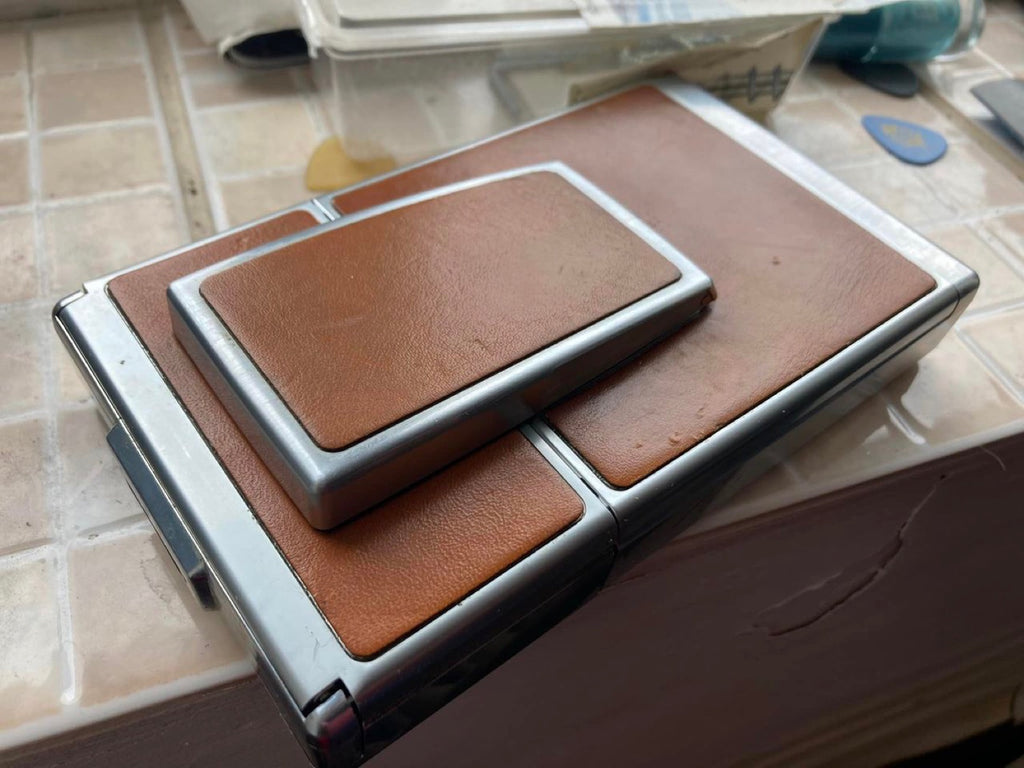
It also looks nothing like a camera, more like a tobacco tin that you’re suddenly folding out and taking photos with, so it’s a great conversation starter!
It’s also super temperamental - so I’m currently in the market for a backup (probably more recent / new) polaroid.
An old SX70 can also be modded to take control of the shutter speed or shoot the 600 film. Although I like the limitations of leaving mine in its original state.
Top tips for playing with Polaroids and instant film
1. Take it with you everywhere - Use instant film to document your life, family and travels. You’ll work out if you love the immediate nature of Polaroid or not. You’ll also learn about its limitations and how to use it.
2. Experiment with compositions - Instant cameras often have fixed focal lengths and limited controls, but you can still play with composition. Experiment with framing, angles, and perspectives to create visually interesting images.
3. Play with Light and Shadow: Light and shadow can dramatically enhance your photos. Experiment with different times of the day, backlighting, and artificial light sources to create unique effects.
4. Double Exposures: Some Polaroid cameras allow for double exposures, where you take two photos on the same frame. This technique can produce surreal and artistic results.
5. Experiment with Film Types: Polaroid offers different types of film with varying characteristics, such as colour, black and white, or special edition films. Experimenting with different film types can add diversity to your photos.

Where to find inspiration from the instant film community
If you want to get involved in instant film and polaroids, these are some great places to get started chatting to other users and
r/Polaroid (Reddit): This subreddit is dedicated to Polaroid and instant film photography. It's a vibrant community where users share their photos, ask for advice, and discuss all things related to instant film.
Flickr Instant Film Groups: Flickr hosts several groups specifically focused on instant film photography. Some popular ones include "Instant Film" and "Polaroid (and other Instant Films)". Instagram: There's a thriving community of instant film photographers on Instagram. You can find and follow hashtags like #Polaroid, #InstantFilm, or #Instax to discover inspiring work and connect with other enthusiasts.
Instant Film Society: The Instant Film Society is an online community and resource hub for instant film photographers. They offer articles, interviews, and a forum where members can discuss techniques and share their work. https://www.instantfilmsociety.org/
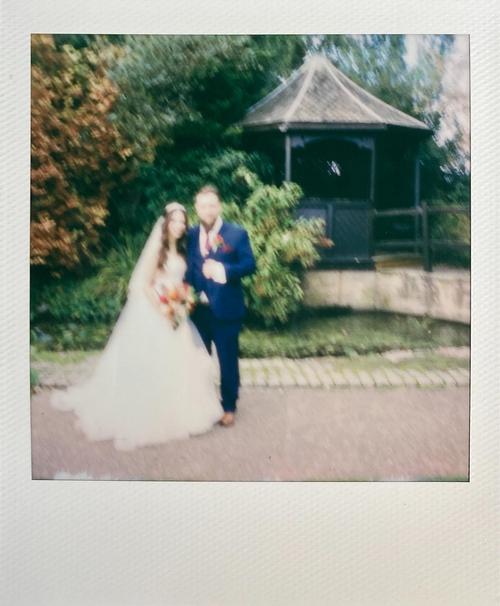
Analog Photography Subreddit: While not exclusively dedicated to instant film, the r/analog subreddit on Reddit is a great place to connect with film photography enthusiasts, including those who shoot instant film.
Local Meet-ups and Workshops: Check for local photography groups or workshops in your area that focus on instant film photography. These events offer opportunities to connect with fellow enthusiasts in person and learn from each other's experiences. Analogue Wonderland often arrange photowalks and events for people who use analogue cameras.
Summary: shooting instant film at weddings
In brief, I love the experience of using instant film at weddings. It adds a fun, experimental element to my work and to the couples experience on the day that is totally unparalleled.
If you want to talk more about instant film or film cameras please drop me a line!
Written by:
Simon Dewey. Simon is a Documentary Wedding Photographer based in Derbyshire. When not photographing weddings, or looking after the children, he can often be found geeking around with vintage musical instruments and analogue cameras.
Website: www.simondewey.co.uk
Instagram: @simondeweyphotography
Ready to dive in?
Keep Reading
View all
Christmas 2025: Shipping & Opening Hours
Christmas 2025 is fast approaching! To make sure your analogue goodies arrive in time, take note of our last shipping dates, plus opening and operating hours over the festive season. We've got everything you need to gift the magic of film photography this Christmas!

Film Photography Christmas Gift Guide 2025: Analogue Wonderland
Capture the magic of Christmas with film - no filters needed. Our 2025 Film Photography Christmas Gift Guide 2025 is packed with thoughtful presents for every type of shooter, from curious beginners to seasoned photographers. Discover film stocks, cameras, and creative accessories that will make this festive season truly memorable.
Subscribe to our newsletter 💌
Sign up for our newsletter to stay up to date on film photography news, sales and events:
Free Tracked Shipping
On all UK orders over £50
Passion For Film
An unbeatable range and an on-site lab
Our Customers Trust Us
Thousands of independent 5* reviews
All Deliveries are Carbon Neutral
Independently audited and verified by Planet
- Opens in a new window.




